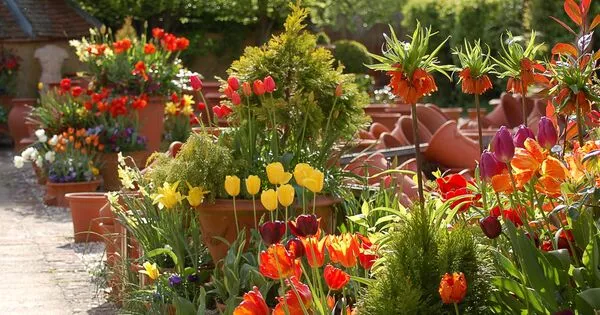A horticulture flora, often known as a garden flora, is a plant identification tool that is organized similarly to a native plants flora. It refers to certain plants and plant species that are cultivated and grown in gardens, landscapes, or other cultivated environments for decorative, ornamental, or useful purposes. It serves the same purpose: to aid in plant identification; but, it only covers plants grown as decorative plants within the specified climate zone or location.
These plants are chosen for their beauty, aroma, adaptability for specific growing circumstances, or other desirable qualities. Horticultural flora can encompass a wide range of plants, including flowers, shrubs, trees, vines, and even edible plants grown for their aesthetic appeal, such as ornamental peppers. Traditionally published in books, frequently in multiple volumes, such floras are now more likely to be generated as websites or CD ROMs.
Horticultural flora can include a wide variety of plant types, such as:
- Flowering Plants: These are often the stars of many gardens, known for their colorful and attractive blooms. Examples include roses, tulips, daisies, and orchids.
- Shrubs and Bushes: These are often used for landscaping and can provide structure, privacy, and visual interest. Examples include azaleas, boxwood, and hydrangeas.
- Trees: Ornamental trees can add height and shade to a landscape while also providing visual appeal. Examples include cherry trees, dogwoods, and Japanese maples.
- Annuals: These plants complete their life cycle in a single growing season but often produce an abundance of colorful flowers. Examples include petunias, marigolds, and zinnias.
- Cacti and Succulents: These are popular for their unique appearance and low maintenance requirements.
- Bulbs: Many plants, such as tulips and daffodils, grow from bulbs and are known for their springtime blooms.
- Herbs and Edible Plants: Some horticultural enthusiasts include herbs and edible plants in their gardens for both practical and ornamental purposes.
Importance
Landscape, urban beauty, and gardening all benefit from horticultural plants. Gardeners and horticulturists frequently choose and maintain these plants to create visually appealing landscapes, to attract pollinators, to provide shade, or for other utilitarian or aesthetic goals. Horticultural flora selection and placement can have a significant impact on the overall beauty and utility of a garden or landscape.
Roses, tulips, orchids, ferns, beautiful grasses, and many types of fruit trees that are planted for their flowers as well as their fruit are common examples of horticultural flora. To ensure the health and vitality of these plants in a garden or landscape environment, cultivation and care may necessitate specialist expertise and skills.
















